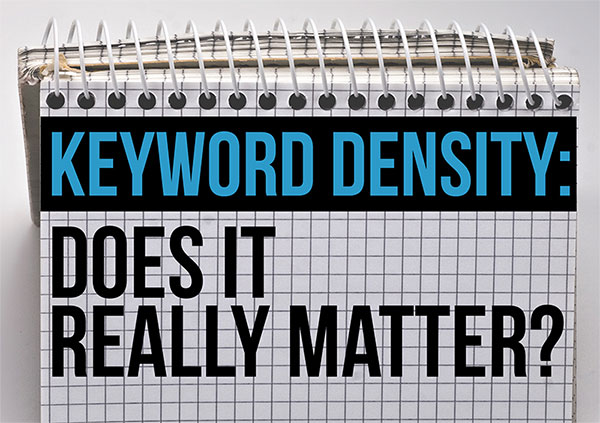The biggest challenge I ever had was to find out a nice algorithm for determining the best possible keyword density for search engine onsite content optimization. I red numerous books, articles, and even blogs, but none of them really explained what is the best keyword density. They all shared the same pattern of logic, keywords should be done “naturally” as you’re writing your article and you should be careful not to overdo it, but in reality that is not exactly true in some scenarios.
The keyword density is extremely influenced by the way your content is organized on that particular page that you’re trying to optimize. In situation where your article is in the beginning of the page and below it is the Main Navigation and the other static text (that’s in HTML locations, you can float it so that the sidebar is on the right and then you have the article content first and then menu), the keyword density should be quite low and “natural” keyword repetition is pretty much enough, but about 90% of the websites are not organized in that fashion.
In situation where you have the main navigation, slogan and other text (only few lines or more) above the actual article content, the requirements for higher keyword density increases dramatically. In some of my websites I have very clean articles that are written only with natural occurrence of the keywords and I found out that they don’t really rank well and my AdSense conversion rates were quite low for the same page. That made me think how to optimize the performance of this page and I noticed something really funny. The AdSense ads were totally irrelevant to the content. That was obvious sign that Google and most probably other search engines are not able to determine the exact meaning of that page and therefore they show irrelevant ads and rank me for the wrong category.
It was really funny because the title, keywords and description are quite well done, the header and the article contained quite a few keywords, but obviously the density was not enough. I was wondering if it’s worth it to put few more repetitions and check out what’s going to happen. The result was stunning. When I came back to that page next day (note that the AdSense bot has to re-crawl the page and get the update content and this sometimes takes a day or so) all advertisements were 100% of target. A week later the page popped out on the top 10. Really nice!
If you already have AdSense account, you should give it a try. Put AdSense banner somewhere on the page and look for the advertisements that appear on it. Make sure you don’t click on them, because that’s against Terms of Services and you might get your account banned. If you see highly relevant ads to that particular page then you’re good and your density is ok. Note that if you’re overdoing it, AdSense won’t tell you the truth, so be careful and keep it as natural as possible. Also be aware that if you change the content (edit the keywords or whatever) the AdSense bot won’t show immediate results and might take up to a day to get the new ads up, so don’t get panicked if the ads are still irrelevant even after the change was made.
Note that this is from my own experience and I don’t guarantee that it will work in your particular case as the standards for keyword density is different for each niche. You might try using products like Internet Business Promoter software that dynamically analyzes the top ranking websites and give you advices on how to optimize the keyword density according to the currently top ranked websites. Note that if you don’t have good inbound links to that page with those keywords, onsite keyword density might not help a lot to your current rankings, but it will still get you some positions up on the index.

